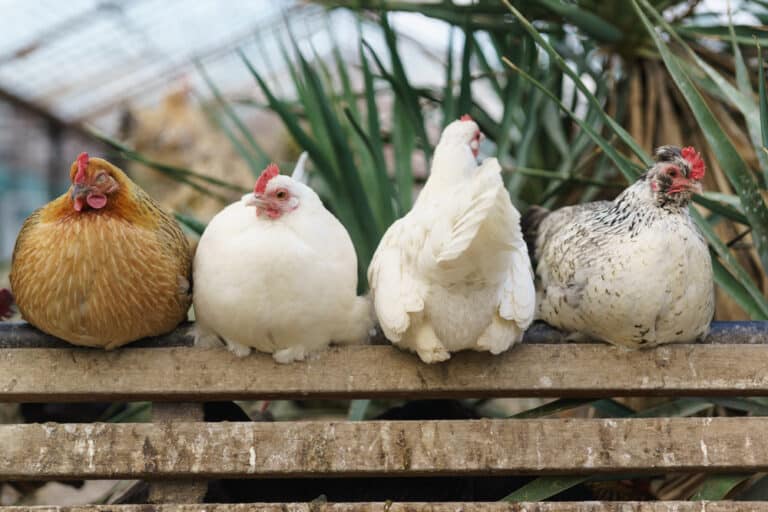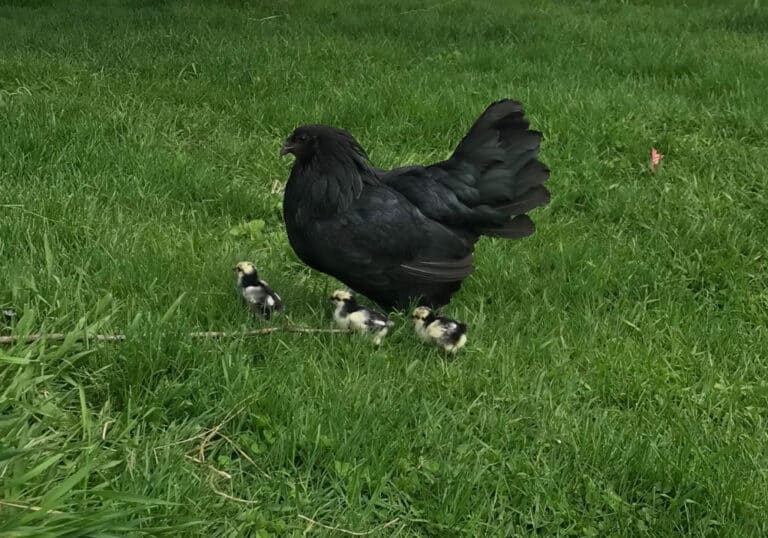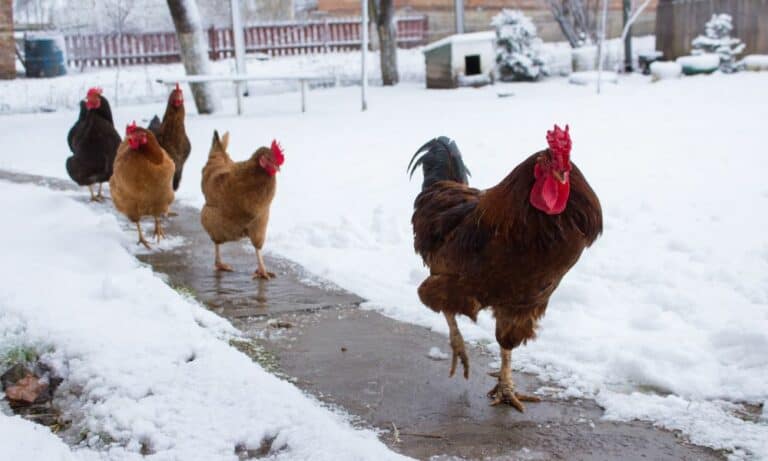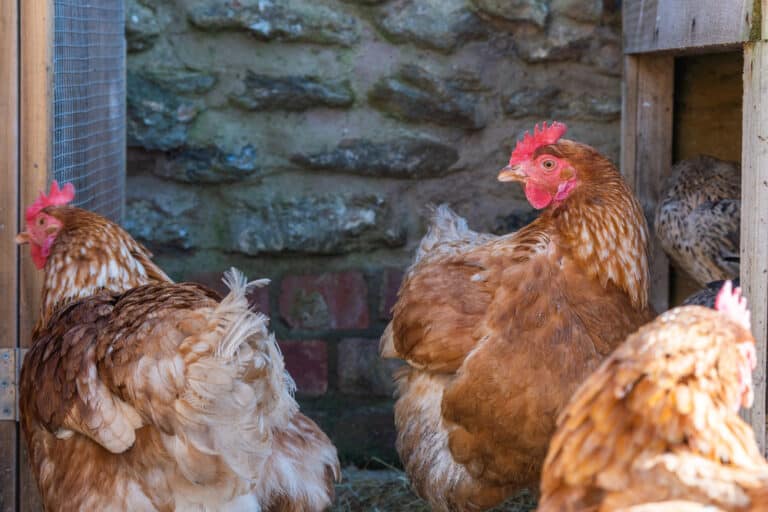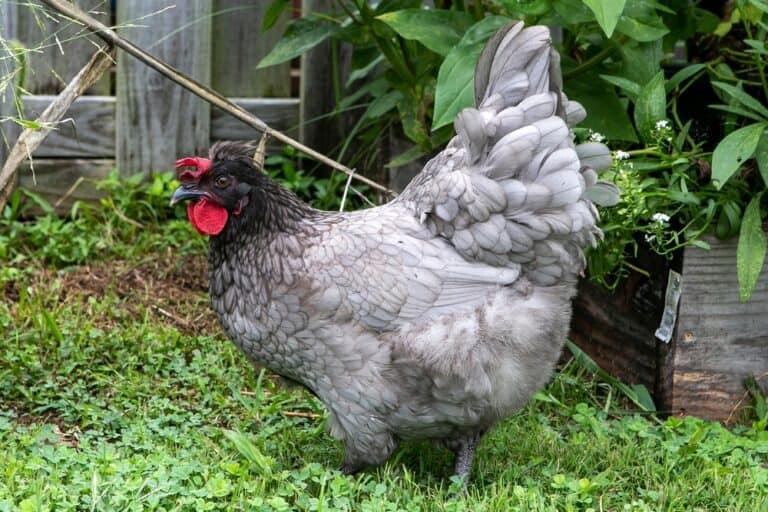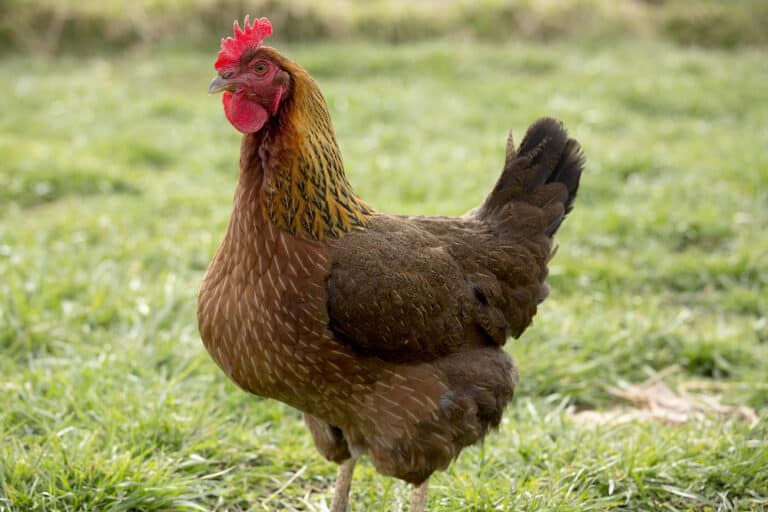If you’re just starting to keep chickens, you’ll want a breed that’s easy to care for. And you’ve come to the right place!
We’re going to look at the best chicken breeds for beginners. We’ll find out about their characteristics and temperaments. And we’ll share some key tips for keeping them healthy and happy.
Ready to find your new feathered friends? Step this way!
Best Chicken Breeds for Beginners
1. Leghorn
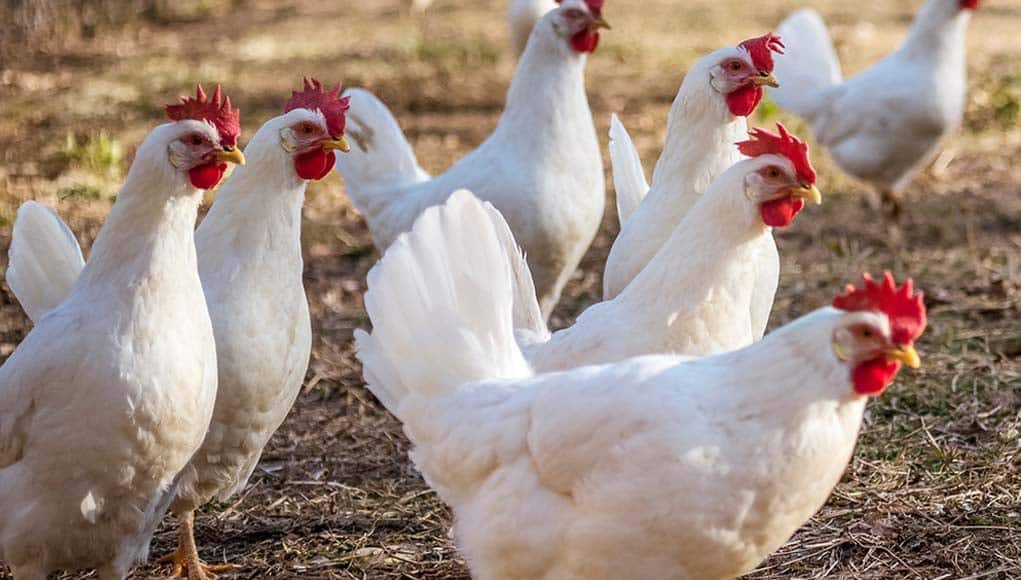
The Leghorn chicken is a great choice whether you’re brand new to keeping chooks or an old hand. These birds are both hardy and easy to manage.
The breed originated in Tuscany in Italy. It’s also known as the Livorno, after the port from which the birds were first exported to the US in the nineteenth century.
By far the most common color variety is the white Leghorn. But amongst the many other shades in existence are buff, silver, brown, red, black, Columbian, and golden duckwing.
Male birds weigh between 5.3 and 7.5 pounds, while hens are between 4.4 and 5.5 pounds. The hens are good layers and rarely go broody. They can produce upwards of 300 large eggs per year.
As with all chooks, you’ll need to ensure Leghorns have continual access to clean, fresh water. These are one of the easiest breeds to feed, though. Just make sure that food is always available, and they’ll eat just as much as they need and no more.
2. Orpington
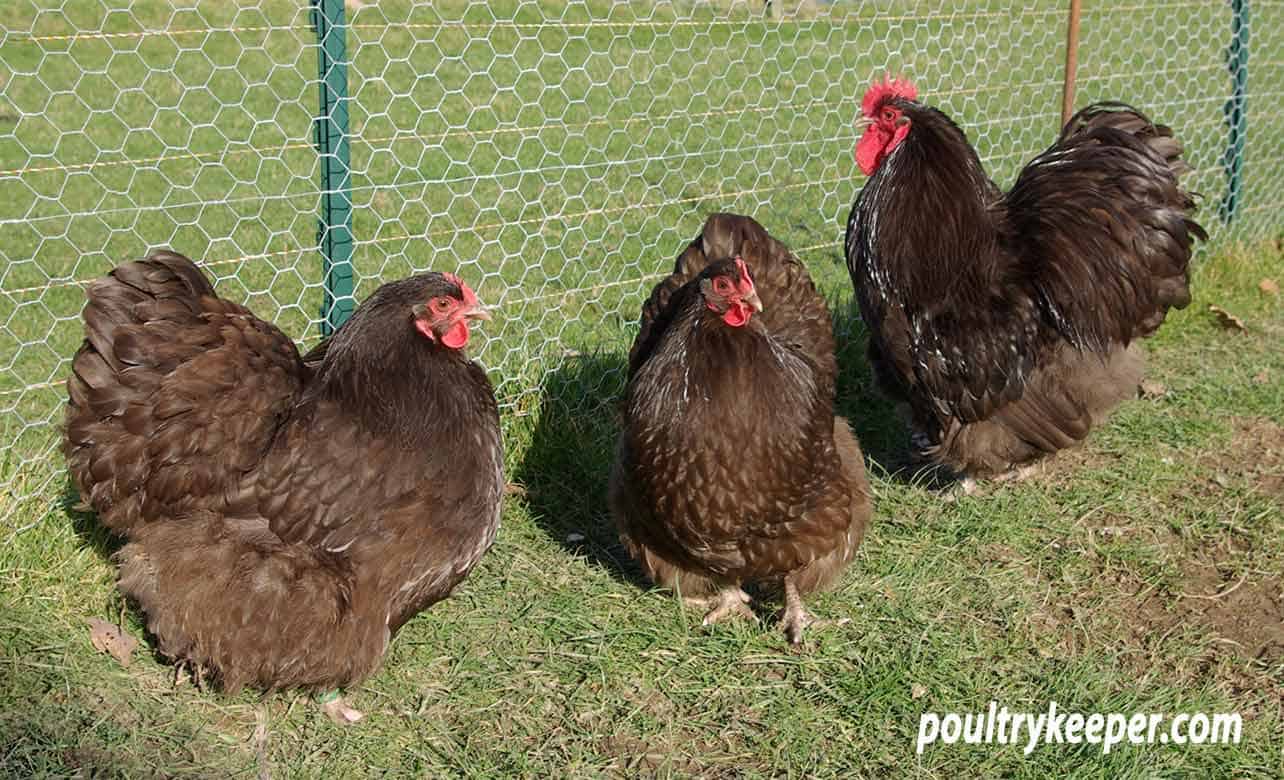
If you’re looking for a show bird that’s suitable for beginners, the beautiful Orpington is a great choice. It’s hardy, easy to care for, and has a gentle and friendly temperament.
The breed originated in Kent, in England, and takes its name from its home town. Buff Orpingtons are probably the best known color variety, but the American Poultry Association also recognizes black, blue, splash and white plumage.
They’re well known for their full, fluffy feathering. They also have rounded bodies, a low stance, short backs, and small heads with single combs.
Although Orpingtons are best known as exhibition chickens, the hens are also very good layers. They’ll produce between 200 and 280 large brown eggs a year.
And these chickens aren’t too fussy about their environment. They’ll be happiest roaming free, but can cope with more limited space. And as long as they have proper shelter and plenty of water, they can handle both warm and cold weather.
3. Australorp
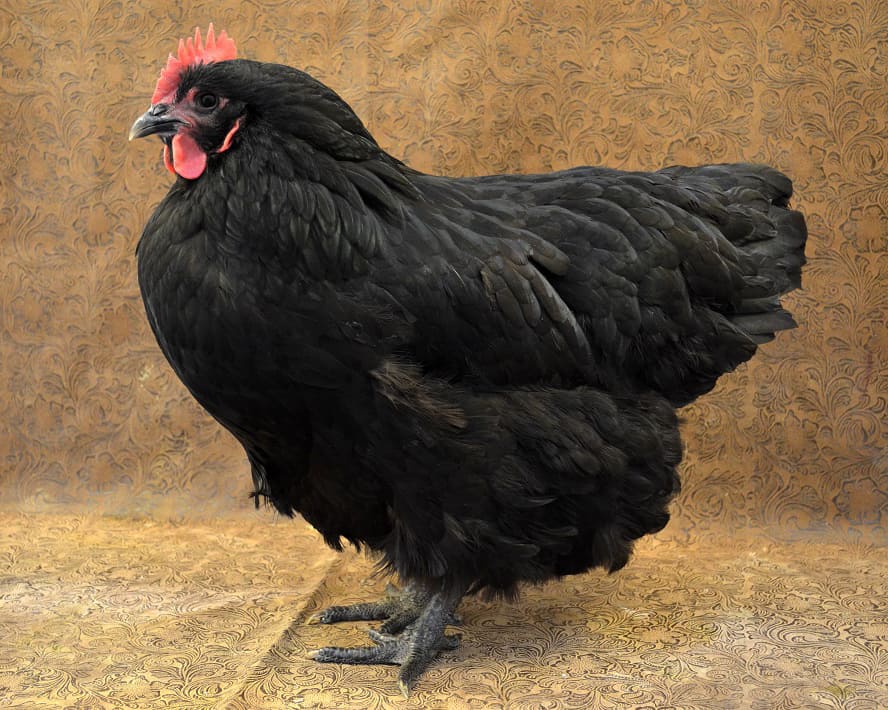
The easy-going Australorp comes from Australia. The hens are famous for their egg-laying abilities, regularly laying more than 300 eggs per year. One record-breaking chook produced an astonishing 364 eggs in 365 days!
Even better, they’re very easy chickens to keep, even for beginners. They’re friendly, laidback, and good with both adult humans and kids. They won’t get stressed out by cats or dogs. And their mellow vibe can even cool the temperature among fellow chooks.
They’re resilient too, bred to survive in the sometimes unpredictable Aussie climate.
The first Australorps were bred from black Orpingtons and were black too. But today, you’ll also find these chickens in white and blue.
Australorps don’t have any special requirements. Like all chooks, they need shelter, shade, constant access to fresh, clean water, and plenty of good quality food.
The glossy dark feathers of black Australorps, though, absorb heat, making them more vulnerable to heatstroke. So it’s particularly important that they have plenty of shade and cool water when the mercury rises.
4. Plymouth Rock
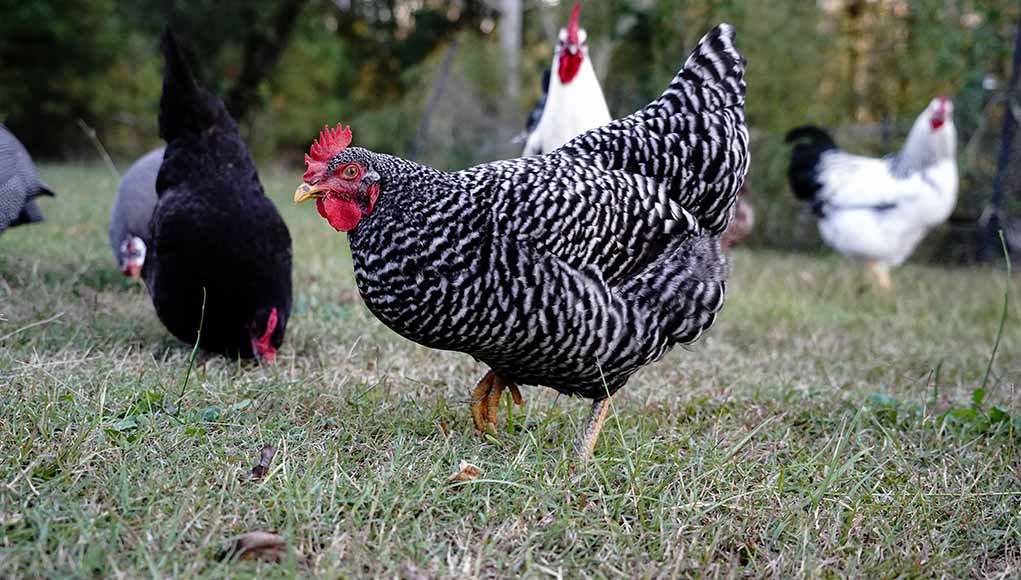
The Plymouth Rock chicken hails from Massachusetts. The breed was first developed in the nineteenth century. It was once the most widely kept of all chicken breeds in the US, and continues to be very popular to this day.
Plymouth Rocks will thrive when able to roam free, but they can also tolerate more limited spaces. They’re cold hardy, although the large combs and wattles of roosters may need a smear of petroleum jelly to protect them from frostbite.
They can also handle warmer temperatures. As with all chooks, of course, they’ll need access to plenty of cool water and shade.
They’re gentle and genial birds. And although their sturdy build means they’re generally in the middle of the pecking order, they’re unlikely to bother flock-mates further down. They’re friendly to humans they know too, and have been known to become lap chickens.
The hens will lay around 200 large brown eggs a year, each one weighing about 2 ounces.
5. Sussex
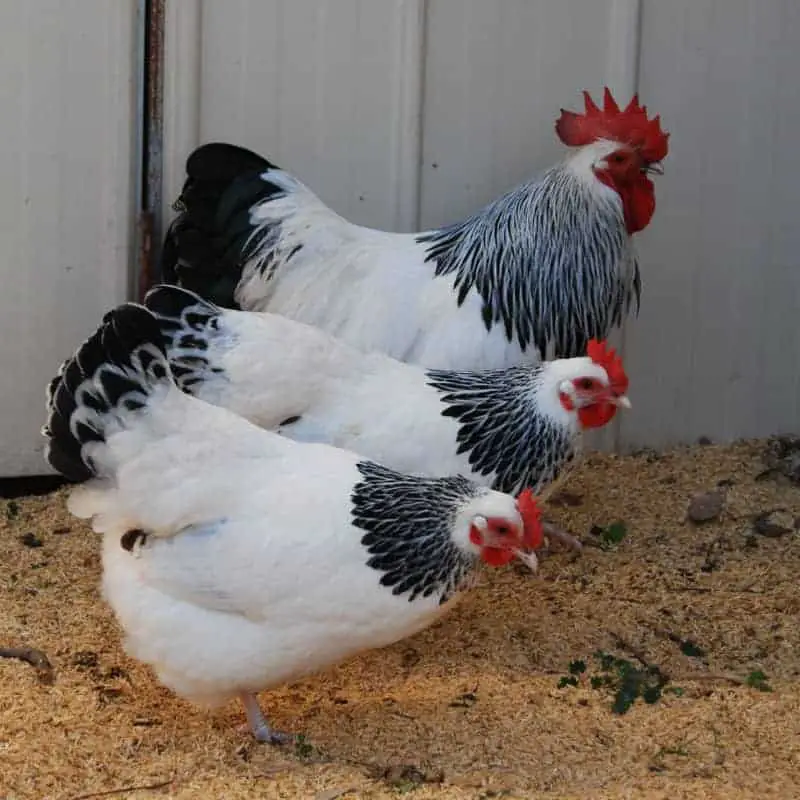
Sussex chickens come from the English county of the same name. A combination of a great temperament and hardiness makes them an ideal choice for those just starting out keeping chickens.
They’re exceptionally friendly, calm and curious chooks. They make great pets. And while they were originally bred for the table, the hens are good egg layers.
They start laying at anything between 7 and 9 months old. And they can produce between 180 and 200 eggs per year. Some strains bred specifically for laying do even better, laying up to 250 eggs per year.
They may go broody, and make excellent mothers when the chicks hatch.
Sussexes are hardy birds. Give them shelter, shade and plenty of water, and they’ll happily cope with both the cold and the heat.
6. Wyandotte
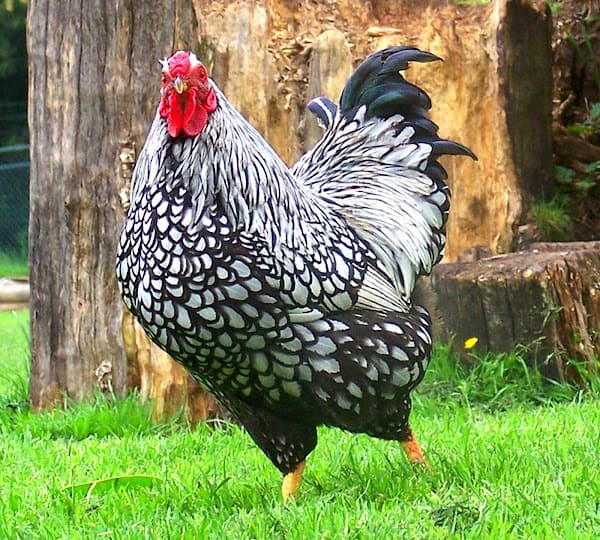
The Wyandotte chicken is American through and through. The breed was developed in the 1870s and takes its name from the indigenous Wyandot people.
The first Wyandottes emerged in upstate New York and had silver laced plumage. Later, a golden laced variety was developed in Wisconsin.
The hens weigh between 6 and 7 pounds, while roosters are between 8 and 9 pounds. Both sexes have rose combs, horn-colored beaks, and stout yellow legs.
Today, Wyandottes are very popular as show birds. But the hens are excellent layers too, producing between 200 and 240 eggs per year.
One of the reasons they’re so easy to keep is their cold hardiness. You’ll usually find the hens continue to lay right through the winter months. In warmer climes, though, their heavy feathering means they’ll need to stay cool with shade and cold water.
They’re friendly and curious birds, with an assertive streak that keeps them near the top of the pecking order. They’re best kept in a single-breed flock.
Like most chickens, they’re happiest when able to roam free. But they will tolerate confinement if necessary.
7. Barnevelder
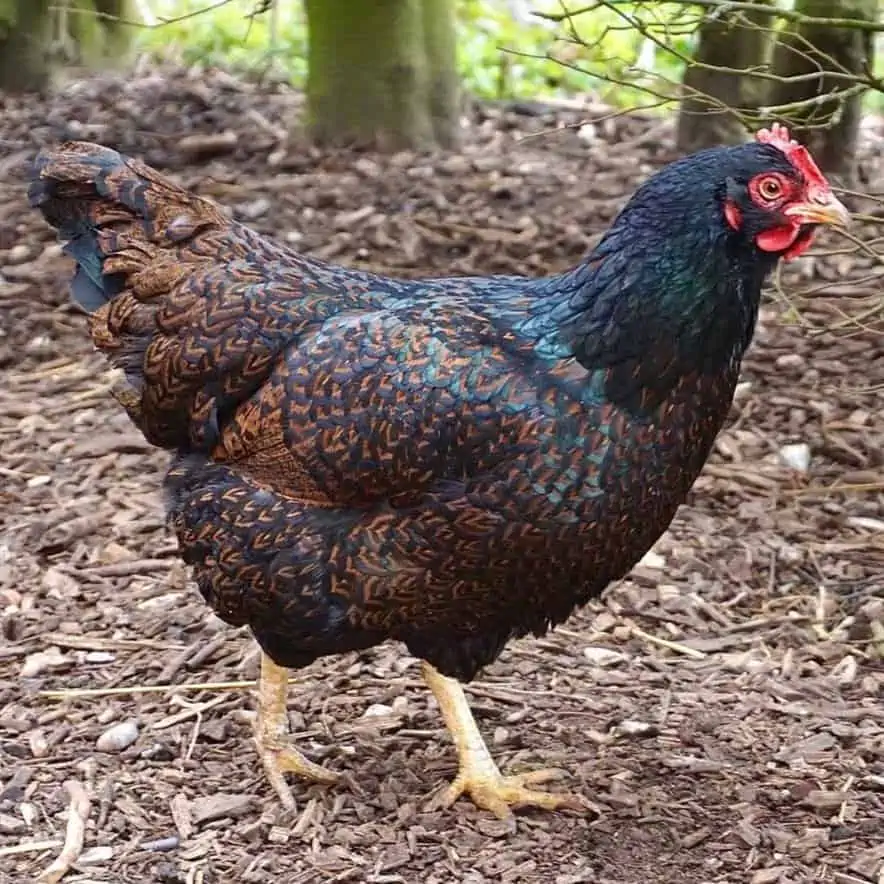
The Barnevelder is a Dutch breed that emerged around 1865. It’s thought to be the result of breeding between local chickens and those imported from China and elsewhere in Asia. Later, Orpingtons and Langshans were added into the genetic mix.
The result is a very hardy chicken, able to handle the cold. The hens will continue laying throughout winter. And while they’re not the most prolific layers, they’ll produce up to 200 large eggs a year.
Different color varieties are recognized in different countries. In the US, however, only one color is recognized – double laced partridge. These chooks have beautiful golden brown feathers with black double lacing on each one.
They’re quiet, friendly and easy-going birds, who get along fine with humans and other chickens. Just don’t mix them with aggressive breeds, as they may be bullied. They’re good foragers, and while they love roaming free, they can tolerate confinement too.
8. Delaware
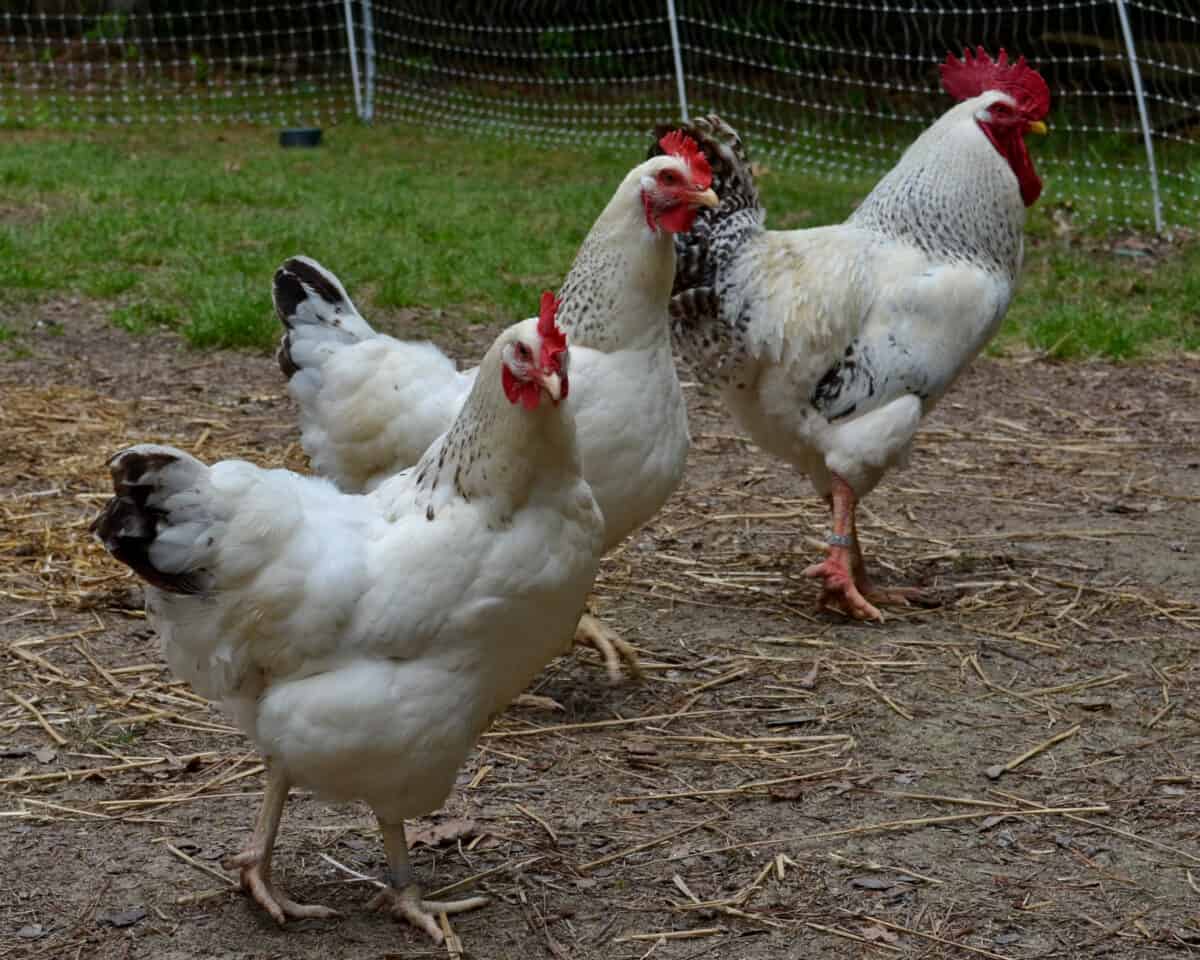
Delaware chickens originate from the US state of the same name. Today, they’re sadly an endangered breed. But they are great as show birds and the hens are decent layers too. So if you’re looking for a more unusual chicken to start your flock, they’re well worth considering.
They’re medium-sized chooks, with roosters weighing about 8.5 pounds and hens a couple of pounds lighter. They’re white, with black barring on the ends of their hackles, wings and tails.
Their combs and wattles are bright red, and quite large. That means they need a little extra care in very cold weather. A smear of petroleum jelly will stop them getting frostbite.
In other respects, though, Delawares are very hardy birds. They mature quickly, and while they don’t usually seek out human company, they’re calm chooks.
The hens lay up to 200 large to jumbo-sized eggs per year. That makes them a great choice for those who love big breakfasts!
9. Buckeye
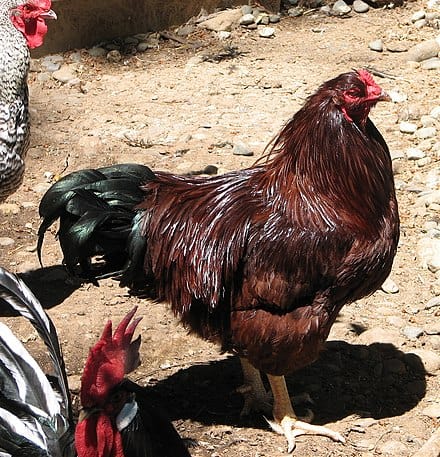
The Buckeye chicken was created by a breeder called Nettie Metcalf in Ohio in the late nineteenth century. Its genetic heritage includes game birds, Cochins and Plymouth Rocks. And its disease resistance, hardiness, and friendly nature make it a great choice for beginner poultry keepers.
Adult males are about 9 pounds, while females are about 6.5 pounds. Most chickens have mahogany red feathers and black tails.
They are happiest when able to roam freely, and are good foragers. And because they have small pea combs, they cope well with cold temperatures.
They’re usually calm and friendly birds, although occasionally cocks may become aggressive, particularly in the breeding season. The hens will produce between 150 and 200 eggs a year.
10. Rhode Island Red
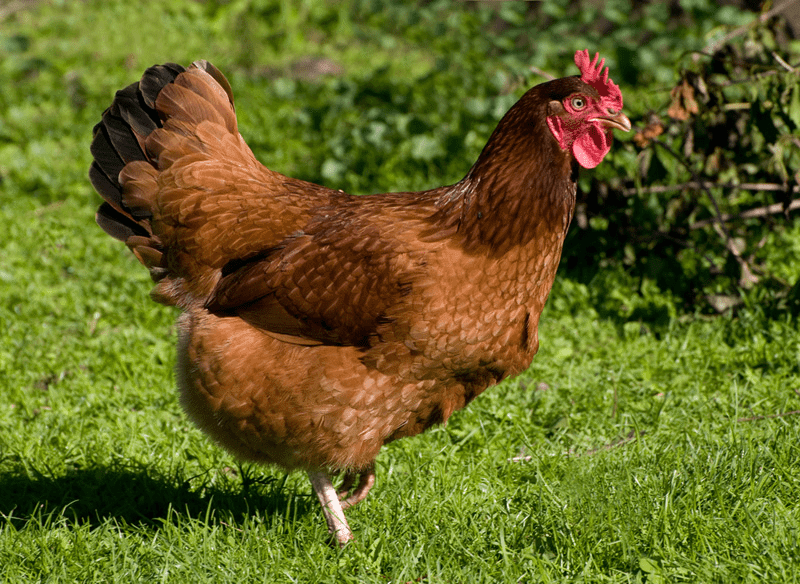
The Rhode Island Red was bred in Rhode Island in the latter half of the nineteenth century. (Note that there’s also a Rhode Island White, but this is a separate breed, not just a different color.)
The ancestors of these chickens were Cochins, Javas, Malay, Shanghai and Leghorns. And it was from the Malay chickens that Rhode Island Reds developed their distinctive mahogany coloring.
There are both standard and bantam varieties. Standard males weigh around 8.6 pounds and standard females are about 6.6 pounds. Bantam males are around 34 ounces, while females are about 30 ounces.
They’re hardy birds, not prone to disease. They don’t have any special requirements beyond the basics of shelter, shade, food, and water. And they’re very self-sufficient, foraging well if able to roam free.
There are two different strains – heritage and production. Hens from the production strain will lay more eggs per year. But those from the heritage strain will generally have more egg-laying years.
There are a couple of things to note with this breed. Rhode Island Reds are generally high up the pecking order, so may bully less assertive chooks. And they can be pretty noisy – so they’re not the best choice if you have noise-sensitive neighbors.
11. New Hampshire
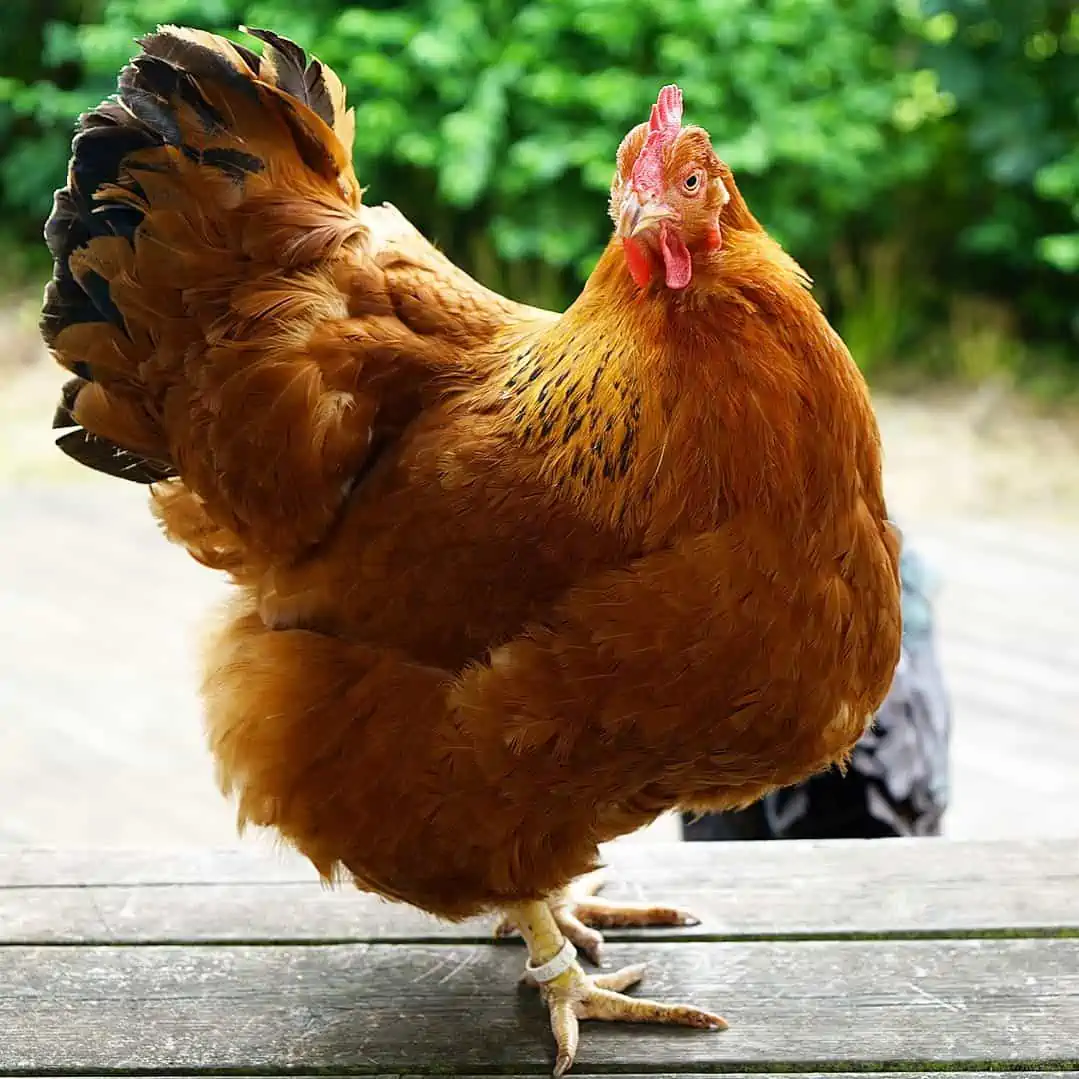
The New Hampshire, sometimes referred to as the New Hampshire Red, was developed from selective breeding of Rhode Island Reds. And this breed shares many of the characteristics that make its ancestors such a good choice for those keeping chickens for the first time.
They’re adaptable birds, happy roaming free or in more confined spaces. The hens lay around 200 large brown or tinted eggs per year. They can go broody, and are good sitters and mothers to their young.
They’re robust too, with no particular health issues. And they’re friendly and easy to tame, making them great as pets.
New Hampshires tend to be lighter in color than Rhode Island Reds. They have orange eyes, reddish or horn-colored beaks, single, red combs, and red wattles and earlobes.
Males weigh about 8.5 pounds, while hens are a couple of pounds lighter. There’s also a bantam variety, with males weighing about 34 ounces and females about 30 ounces.
12. Dominique
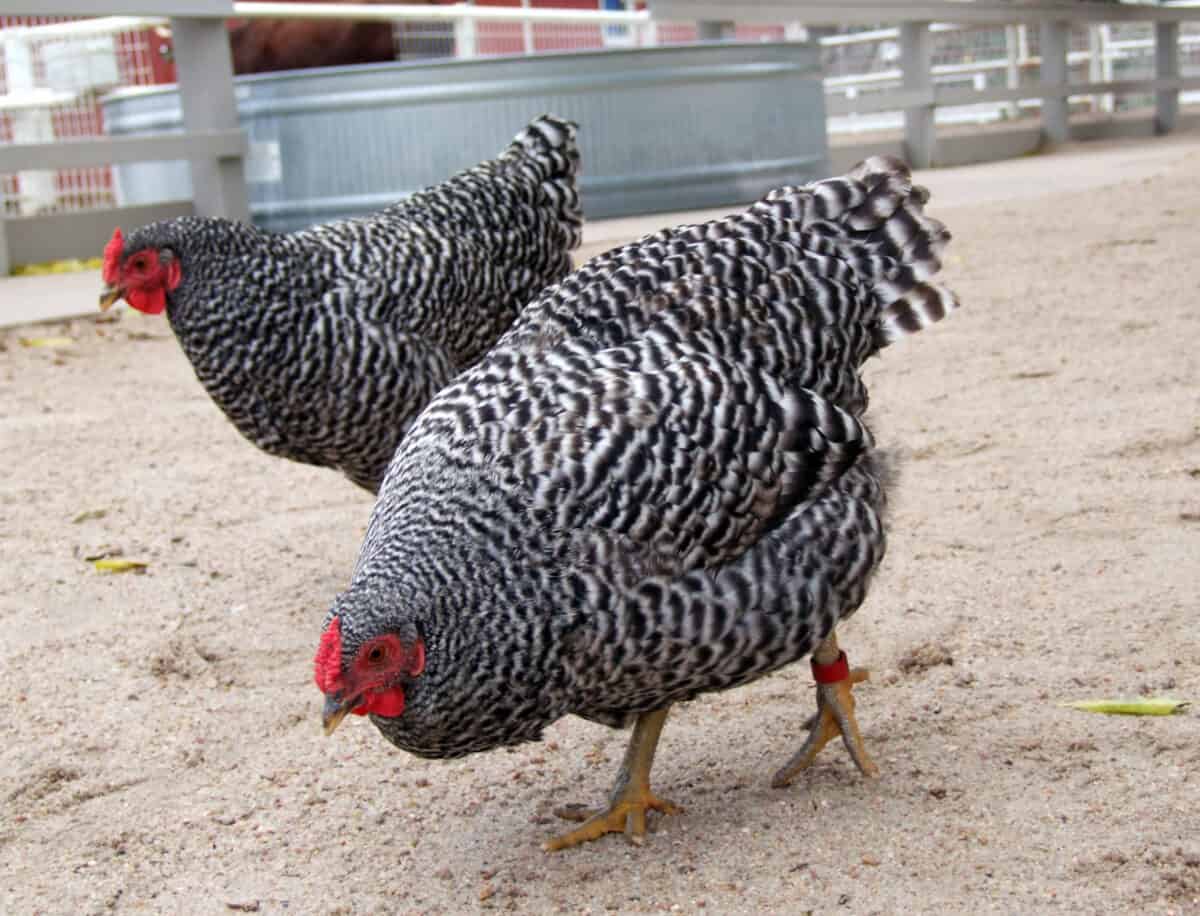
The Dominique is a friendly and robust chicken that’s great for first-time poultry keepers. And it’s believed to be the oldest of all the American chicken breeds.
It’s thought to have been the result of breeding between chickens brought to the US from Britain. The Dominique’s ancestors may include Dorkings and Sussexes.
They’re medium-sized birds, with adults weighing between 5 and 7 pounds. There’s only one color variety, a regular light and dark pattern known as “cuckoo”.
The Dominique’s feathers are held close to the bird’s body, which helps it to keep warm. And it has a small rose comb which is resistant to frostbite. It’s a combination that means these chooks do better than many other breeds in colder temperatures.
They will tolerate confinement, but prefer to roam. Give them the freedom to do that, and they’ll repay you by supplementing their diet using their excellent foraging skills.
The hens lay over 200 medium-sized brown eggs per year. And they’ll usually lay through the winter too. They occasionally go broody, and make excellent mothers.
And if you’re looking for a feathered friend, Dominiques are as sweet and good-natured a chicken as you’ll find.
Friendly, hardy and easy-going chooks
That brings us to the end of our look at some of the best chicken breeds for beginners. These chickens cope well with different environments, and have friendly temperaments that make keeping them a joy.
Whatever breed you choose, good luck as you begin your chicken-keeping journey!

